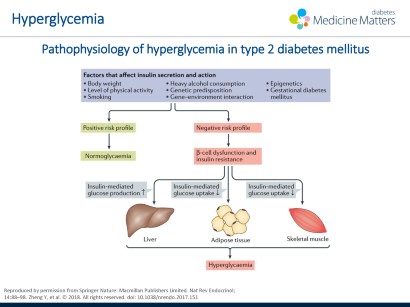Type 2 Diabetes Mellitus Pathophysiology

Type 2 diabetes type 2 diabetes is the most common form of diabetes.
Type 2 diabetes mellitus pathophysiology. In addition to type 2 diabetes the metabolic syndrome is associated with an increased risk of cardiovascular disease the main complication of type 2 diabetes see chapter 13 6 1. With type 2 diabetes your body either resists the effects of insulin a hormone that regulates the movement of sugar into your cells or doesn t produce enough insulin to maintain normal glucose levels. As per statistics type 2 diabetes is the most commonly occurring type in comparison to the other two forms of diabetes mellitus. Diabetes mellitus type 2.
This ailment is a disease state which involves the dysfunction of insulin producing pancreatic beta cells insulin hormone resistance in cells of the body or a combination of both. Type 2 diabetes mellitus consists of an array of dysfunctions characterized by hyperglycemia and resulting from the combination of resistance to insulin action inadequate insulin secretion and. Type 2 diabetes mellitus is often associated with certain genetic predispositions environmental factors lifestyle choices and the dynamic interactions between all of these different aspects. The causes of type 2 diabetes are multi factorial and include both genetic and environmental elements that affect beta cell function and tissue muscle liver adipose tissue and pancreas insulin sensitivity.
Regarding the definition of diabetes mellitus it is often described as a fasting blood glucose level of 126 milligrams per deciliter mg dl or more. Pathology of type 2 diabetes in type 2 diabetes the body either produces inadequate amounts of insulin to meet the demands of the body or insulin resistance has developed.

